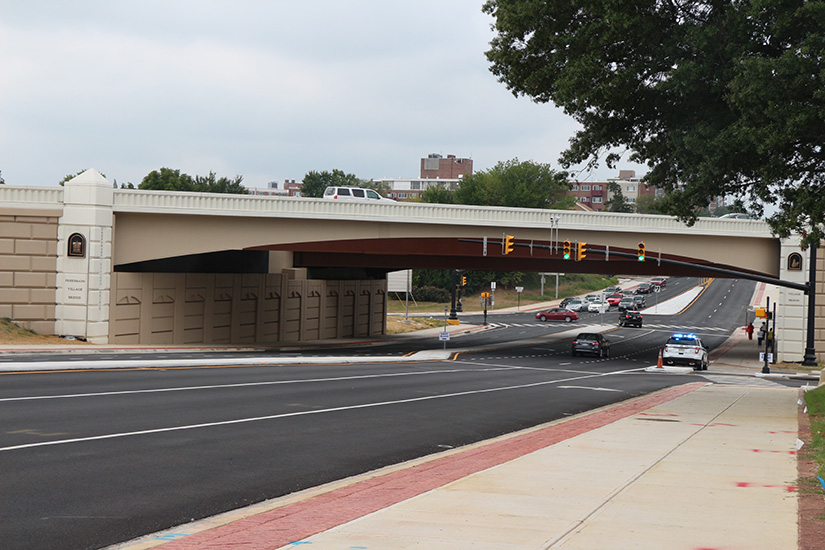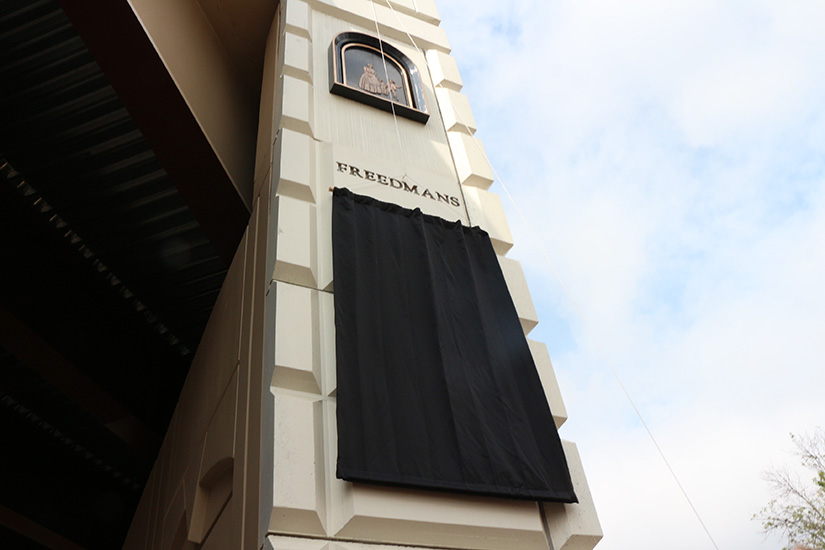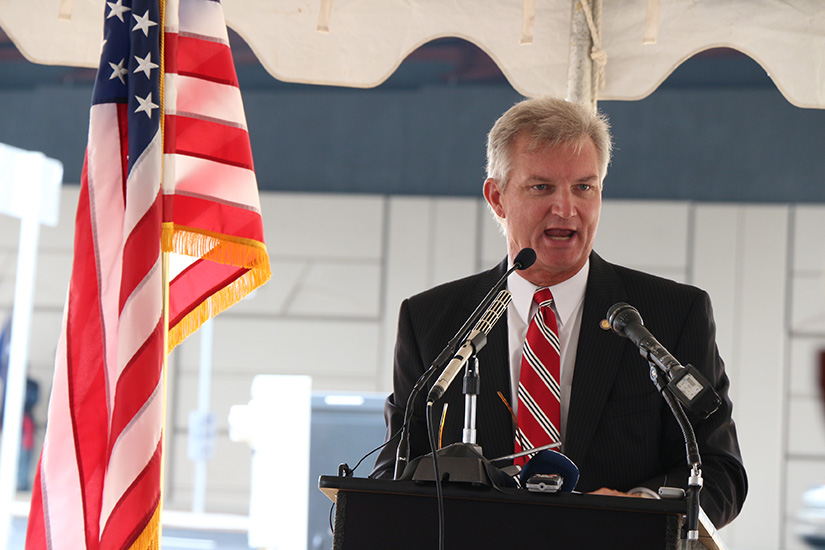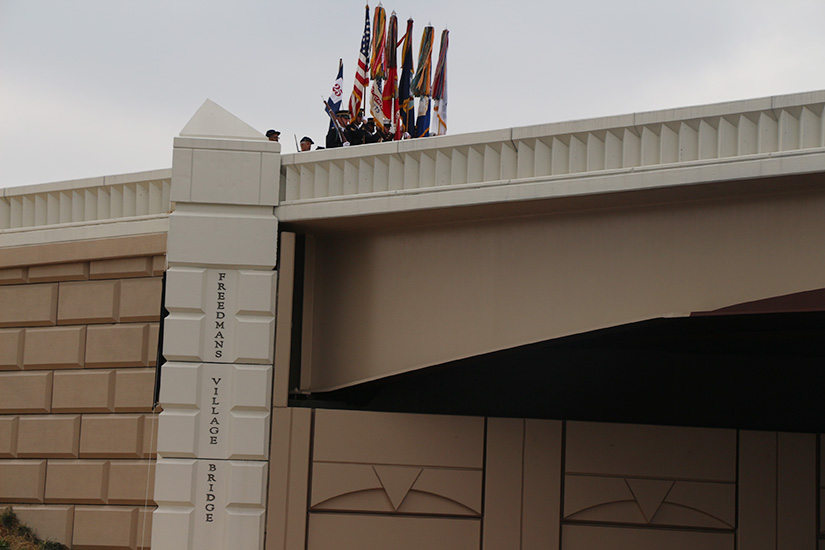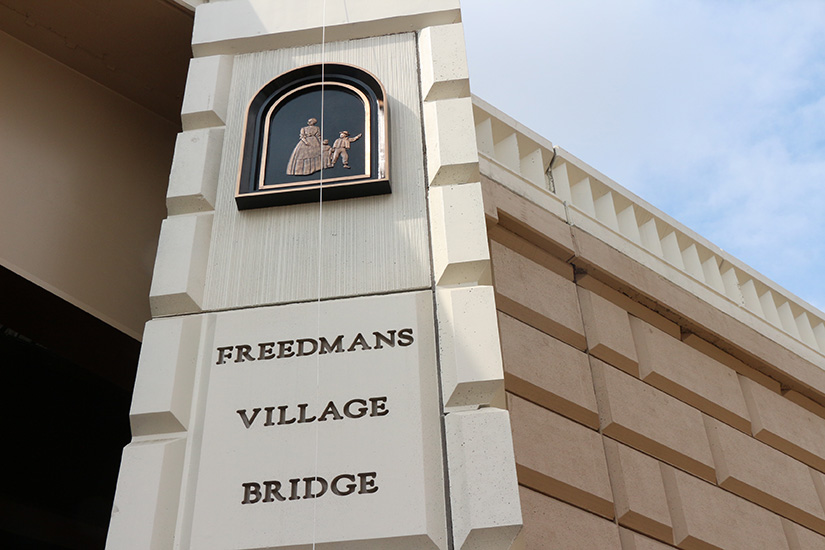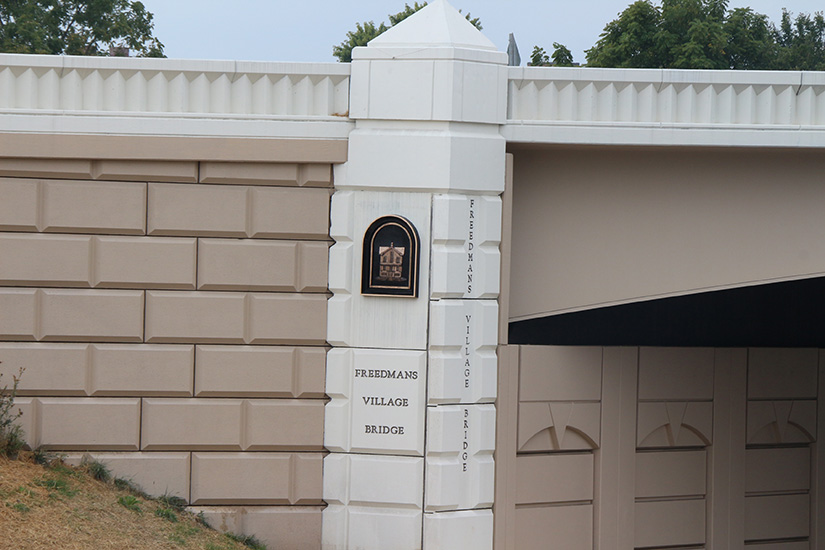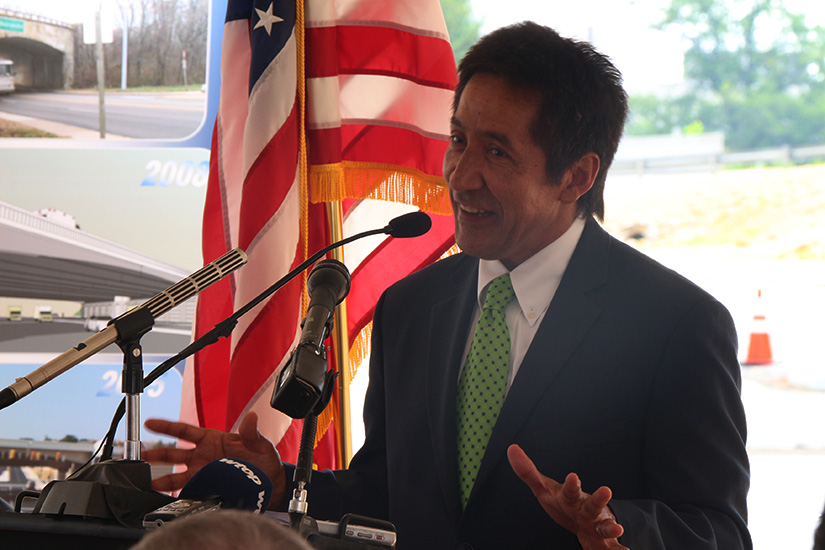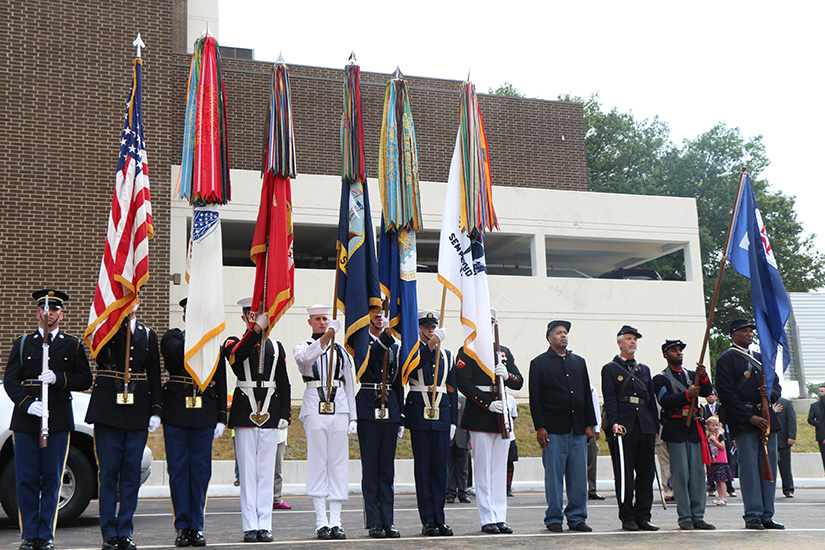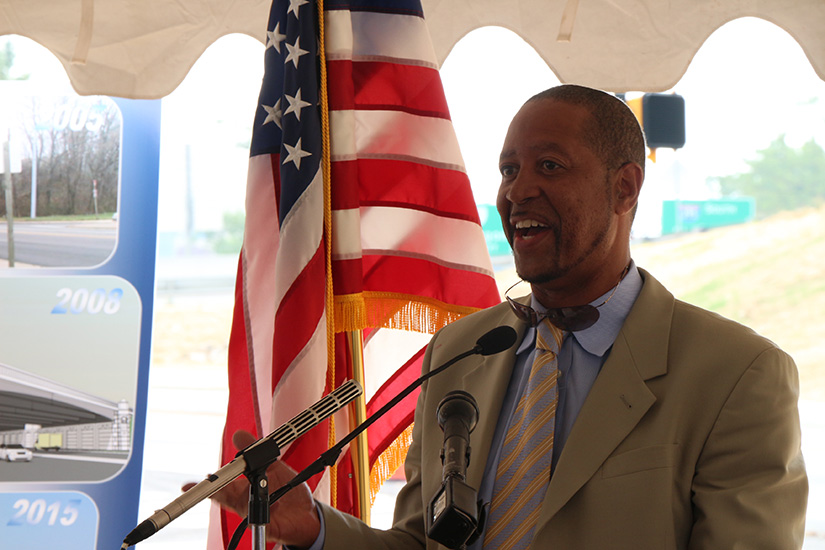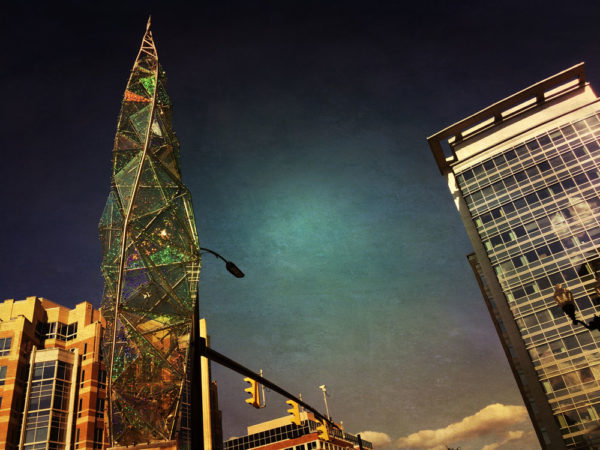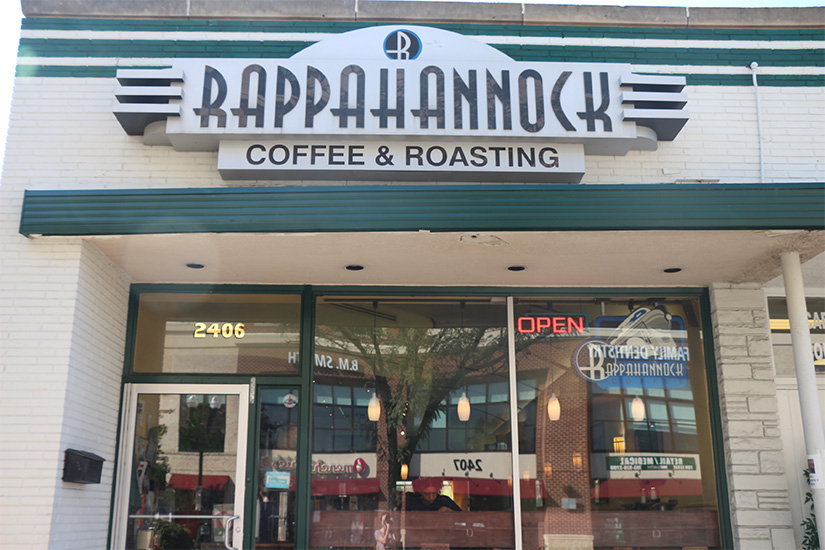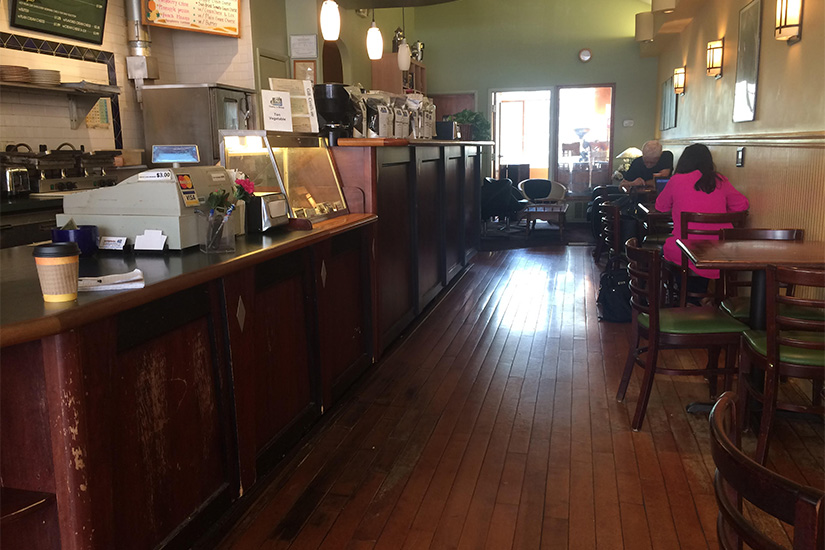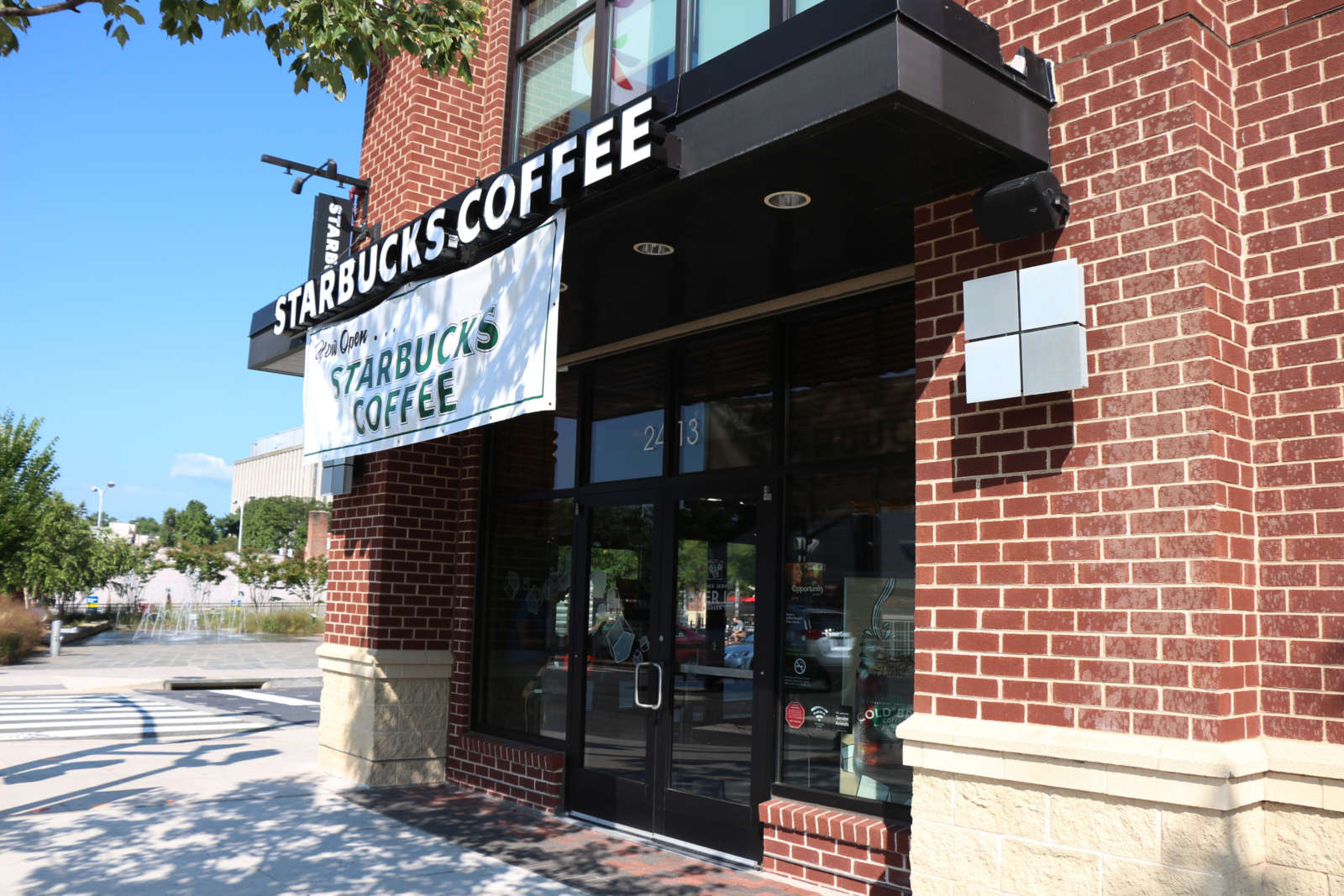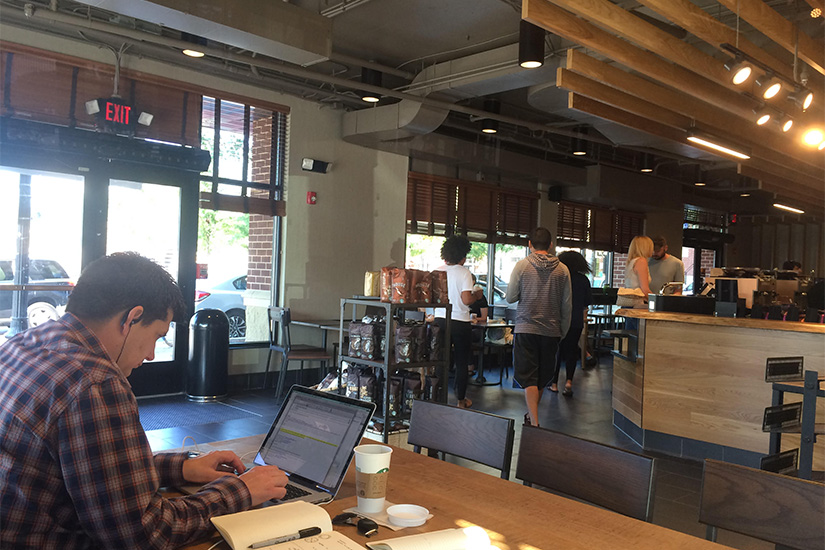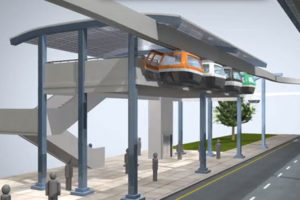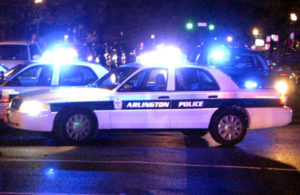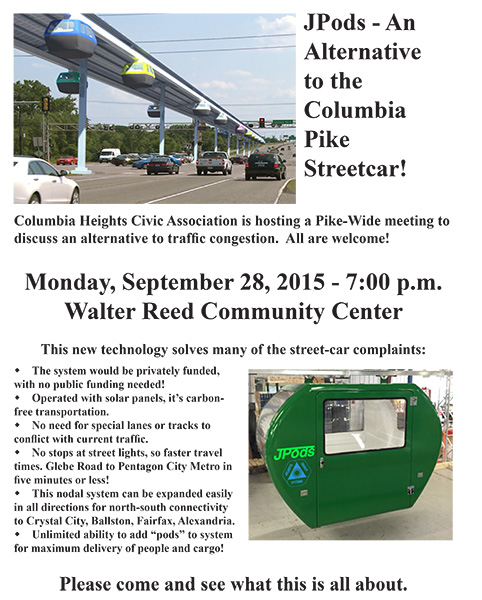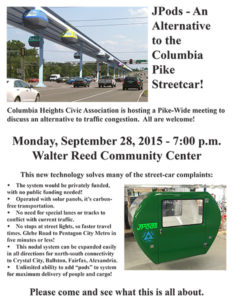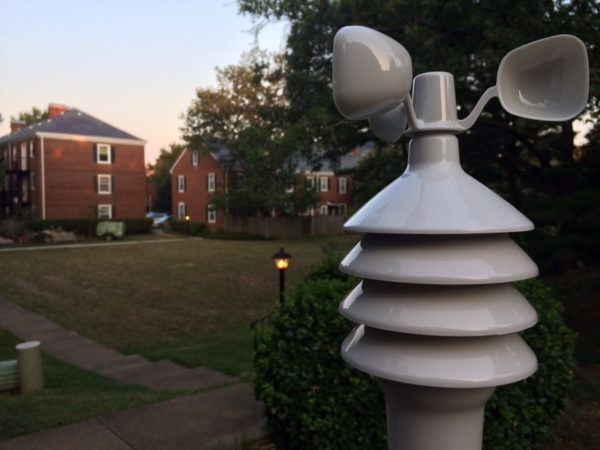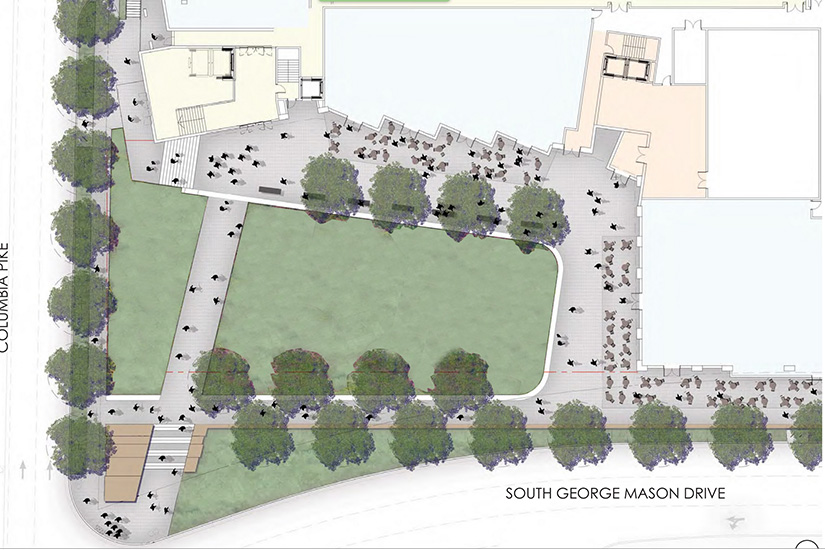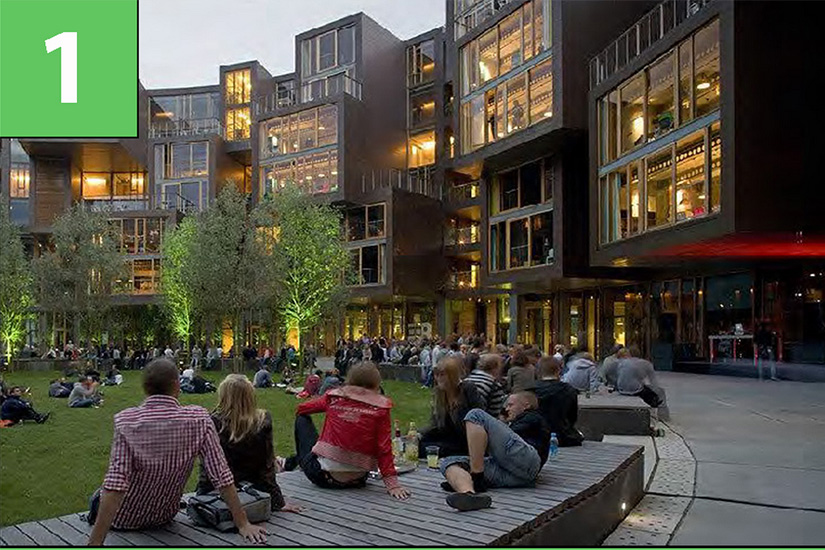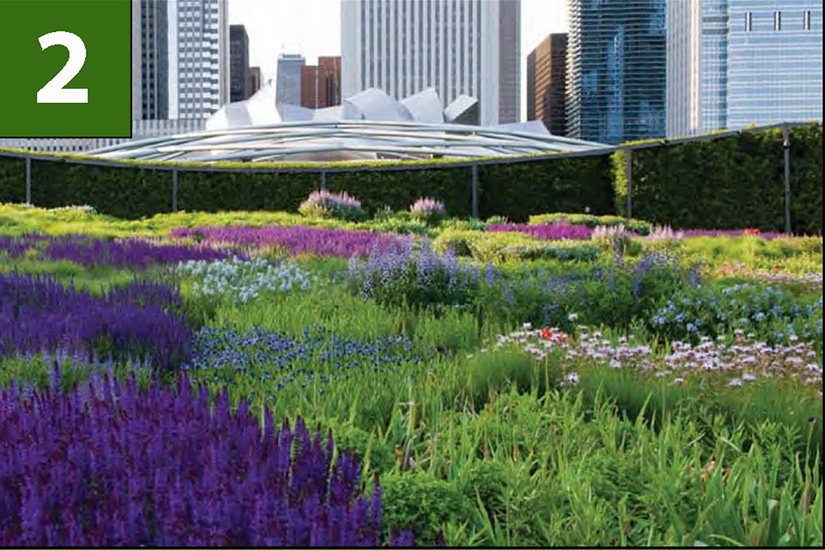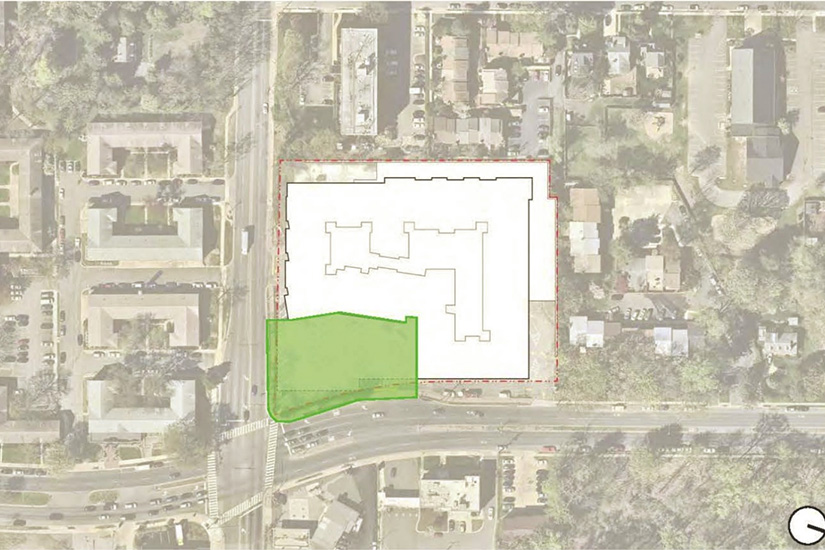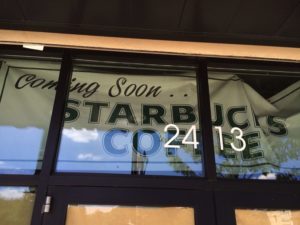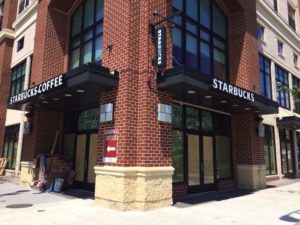Gov. Terry McAuliffe has dedicated the bridge that takes Washington Blvd over Columbia Pike as Freedman’s Village Bridge, in honor of settlement for freed slaves started in Arlington during the Civil War.
McAuliffe was joined by transportation officials, Arlington County Board members and descendants of Freedman’s Village residents as he unveiled one of the two plaques on the bridge this morning.
“I am pleased to be here today, on behalf of all the citizens of the Commonwealth of Virginia to fully, right now, dedicate our new bridge as the Freedman’s Village Bridge,” McAuliffe said.
The new bridge recognizes the importance of Freedman’s Village, the government settlement that housed freed slaves in Arlington. The village transformed from the government settlement to a thriving neighborhood with schools, a hospital and housing for the residents until its close in 1900.
Henderson Hall, the Marine Corps installation, now sits where Freedman’s Village was built, said Craig Syphax, a descendant from Freedman’s Village residents and the president of the Black Heritage Museum of Arlington.
“This bridge is very instrumental in keeping the black history alive,” Syphax said.
Many of the descendants of Freedman’s Village residents attended the bridge unveiling in honor of their ancestors. After the village was closed down, many of the residents moved to what is now known as Nauck and High View Park (formerly Green Valley and Hall’s Hill, respectively).
“I think the black residents of South Arlington are going to embrace this structure because of its expansiveness and its name that has been chiseled onto it and because it represents freedom,” Syphax said.
The bridge is the result of teamwork between Arlington County and the Virginia Department of Transportation. Community input, meanwhile, was influential in naming the bridge, McAuliffe said.
The bridge has a two-fold purpose, said County Board Vice Chair Walter Tejada during the dedication ceremony. Beyond replacing an existing bridge that was structurally unsound, the bridge serves as a way to recognize Arlington’s history.
“This new structure is not only steady completion and reflexive of the rich history of the area but will provide excellent accommodation to pedestrians and bicyclists, and those of you who are familiar with Arlington, know we are big about pedestrian circulation and bicyclists here in Arlington,” Tejada said.
The four-lane bridge handles about 80,000 vehicles per day and is wider and taller than the previous bridge, allowing roomier sidewalks and, originally, the potential of a streetcar running underneath. According to Virginia law, bridges can only be named in memory of a deceased person or to recognize an area with historical significance.
“Today we memorialize the residents of Freedman’s village who paved the way for all future generations of African Americans with a bridge dedicated in their honor,” Syphax said.


